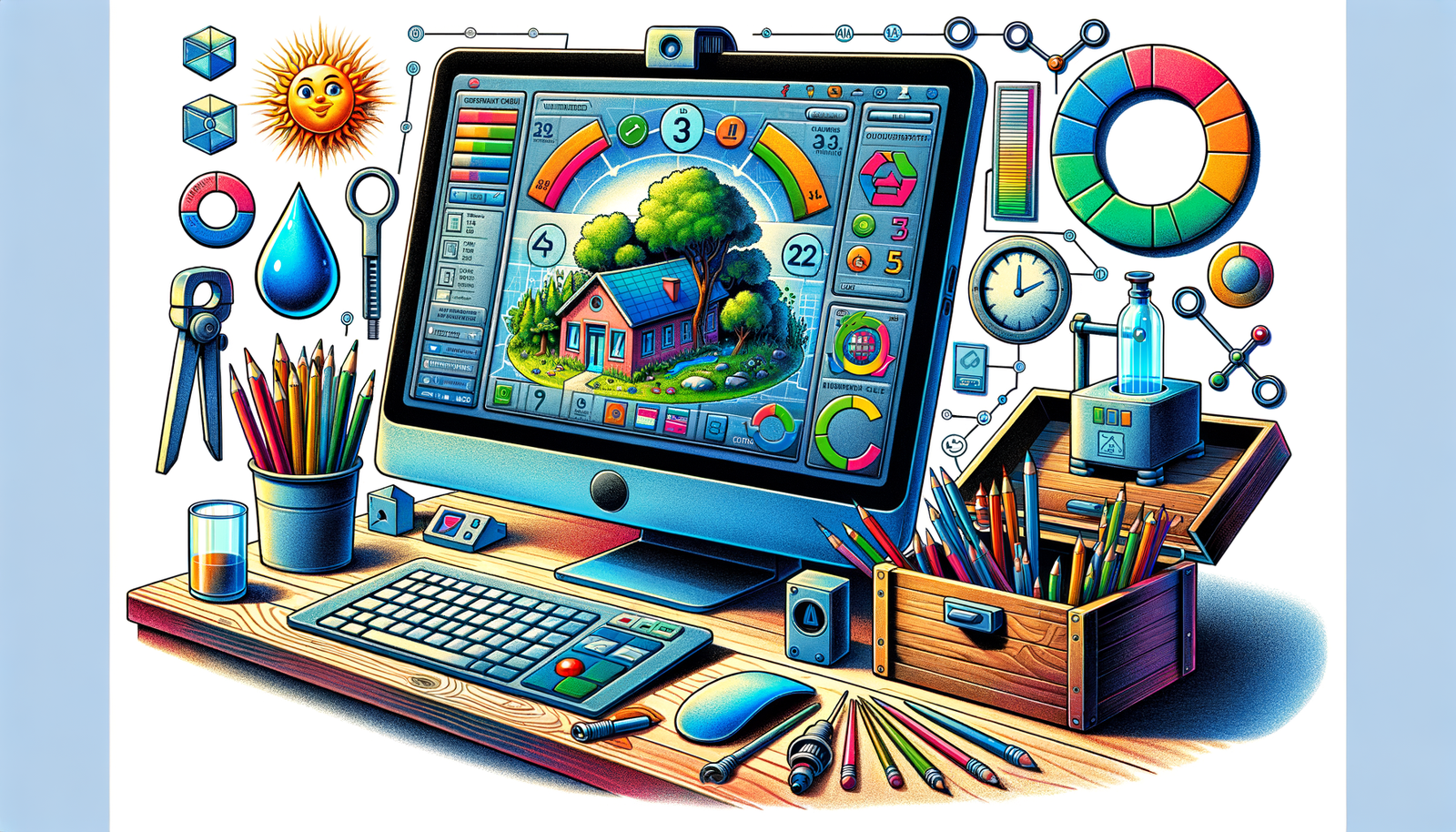Your Cart is Empty
Customer Testimonials
-
"Great customer service. The folks at Novedge were super helpful in navigating a somewhat complicated order including software upgrades and serial numbers in various stages of inactivity. They were friendly and helpful throughout the process.."
Ruben Ruckmark
"Quick & very helpful. We have been using Novedge for years and are very happy with their quick service when we need to make a purchase and excellent support resolving any issues."
Will Woodson
"Scott is the best. He reminds me about subscriptions dates, guides me in the correct direction for updates. He always responds promptly to me. He is literally the reason I continue to work with Novedge and will do so in the future."
Edward Mchugh
"Calvin Lok is “the man”. After my purchase of Sketchup 2021, he called me and provided step-by-step instructions to ease me through difficulties I was having with the setup of my new software."
Mike Borzage
Integrating Sustainability Metrics in Design Software: Techniques, Tools, and Future Trends
August 20, 2024 3 min read


Understanding Sustainability Metrics in Design
In the modern design landscape, the concept of sustainability has evolved from a niche consideration to a core aspect of project execution. Sustainability metrics, which are defined as quantitative measures that assess the environmental and ecological impact of a design, play a crucial role in ensuring that projects are eco-friendly and sustainable. Integrating these metrics into the design process allows designers to create solutions that not only meet functional requirements but also adhere to environmental standards, thereby contributing to a sustainable future.
Common Sustainability Metrics are essential in evaluating the environmental impact of designs. These include:
- Carbon footprint: This metric measures the total greenhouse gas emissions caused by a product or activity, expressed as carbon dioxide equivalent (CO2e).
- Energy consumption: Evaluates the amount of energy used throughout the lifecycle of a product or a building, highlighting opportunities for energy efficiency.
- Material efficiency: Assesses the amount of material used in relation to the output, promoting the use of sustainable materials and reducing waste.
- Water usage: Measures the volume of water required during the production and operational phases, emphasizing the need for water conservation strategies.
Adhering to industry standards and regulations is vital for integrating sustainability metrics into design. Key standards include LEED (Leadership in Energy and Environmental Design), BREEAM (Building Research Establishment Environmental Assessment Method), and ISO 14001 (Environmental Management Systems). These standards provide frameworks and guidelines that influence design decisions and ensure that sustainability metrics are systematically incorporated into projects.
Integrating Sustainability Metrics in Design Software
Modern design software plays a pivotal role in incorporating sustainability metrics into the design process. Advanced software tools offer functionalities that enable designers to evaluate and optimize their projects based on various sustainability parameters. Leading design software such as Autodesk Revit, SolidWorks, and Rhino include features and plugins that facilitate the integration of sustainability metrics, allowing for a holistic approach to eco-friendly design.
Integrating sustainability metrics into the design workflow involves several steps. First, designers need to identify the relevant metrics for their project and gather the necessary data. Next, they can utilize tools and plugins within their chosen software to input and analyze this data. For example, Autodesk Revit offers plugins that assess energy consumption and material efficiency, while SolidWorks provides tools for evaluating the carbon footprint of different design options.
Reliable data sources are crucial for accurate sustainability assessments. Designers can obtain data from industry databases, environmental agencies, and material suppliers. Input methods vary depending on the software, but generally involve importing data files, entering data manually, or using API integrations to link real-time data streams.
Case Studies and Applications
In architectural design, several projects have successfully integrated sustainability metrics to achieve eco-friendly outcomes. These projects often utilize tools such as energy modeling software, lifecycle assessment (LCA) tools, and building information modeling (BIM) platforms to evaluate and optimize their designs.
In the product design and manufacturing sectors, the integration of sustainability metrics has led to the development of innovative products that minimize environmental impact. For instance, designers use LCA tools to assess the environmental impact of different materials and manufacturing processes, enabling them to select the most sustainable options.
Urban planning and smart city initiatives also benefit from the integration of sustainability metrics. These projects often employ a combination of GIS (Geographic Information Systems), IoT (Internet of Things) sensors, and big data analytics to monitor and optimize urban environments for sustainability. Examples include smart cities that use real-time data to manage energy consumption, water usage, and waste management, thereby creating more sustainable urban areas.
Future Trends and Challenges
Emerging technologies such as AI and machine learning are poised to enhance the integration of sustainability metrics in design. These technologies can analyze vast amounts of data, identify patterns, and provide insights that help designers make informed decisions. Additionally, IoT and big data have the potential to provide real-time sustainability data, enabling continuous monitoring and optimization of designs throughout their lifecycle.
Despite the advancements in design software, integrating sustainability metrics into design workflows presents several challenges. Common issues include data availability and quality, the complexity of sustainability assessments, and the need for interdisciplinary collaboration. To overcome these challenges, designers can adopt best practices such as standardizing data collection methods, using robust and validated tools, and fostering collaboration between different stakeholders.
Looking ahead, the future of sustainability in design software is promising. As technologies continue to evolve, design professionals will have access to more advanced tools and capabilities that enable them to create sustainable solutions with greater efficiency and accuracy. The role of design professionals will also evolve, with a growing emphasis on promoting sustainability and leveraging advanced software tools to achieve environmentally responsible outcomes.
Also in Design News

Cinema 4D Tip: Lock Framing Early with Cinema 4D Safe Frames and Aspect Overlays
October 30, 2025 2 min read
Read More
ZBrush Tip: Conservative Projection Workflow for Artifact-Free Detail Transfer
October 30, 2025 2 min read
Read More
V-Ray Tip: Bake Static GI into Lightmaps for Real-Time Engines
October 30, 2025 2 min read
Read MoreSubscribe
Sign up to get the latest on sales, new releases and more …


